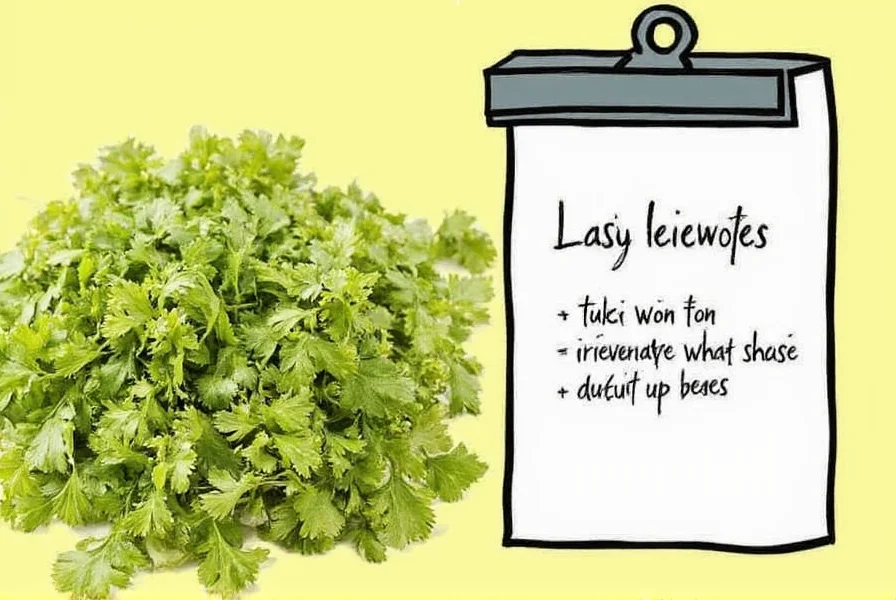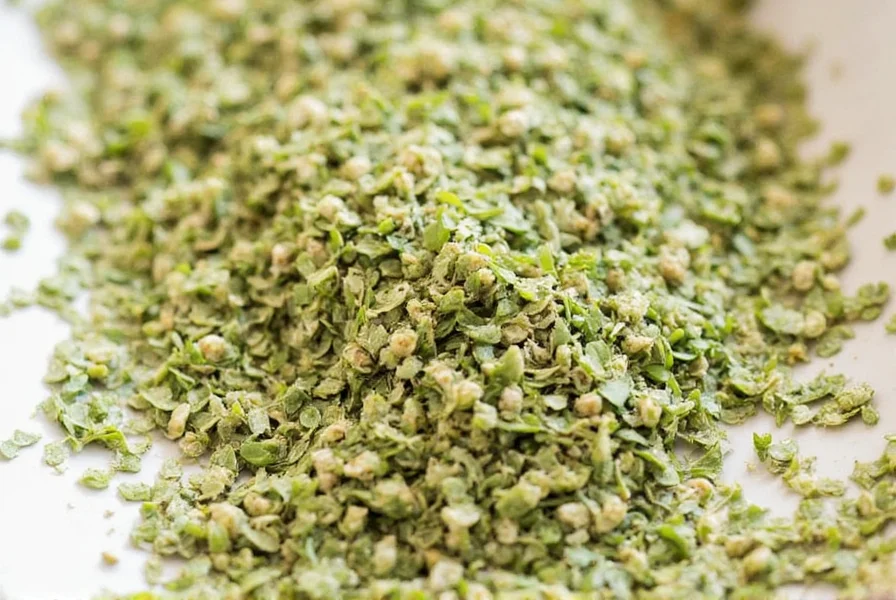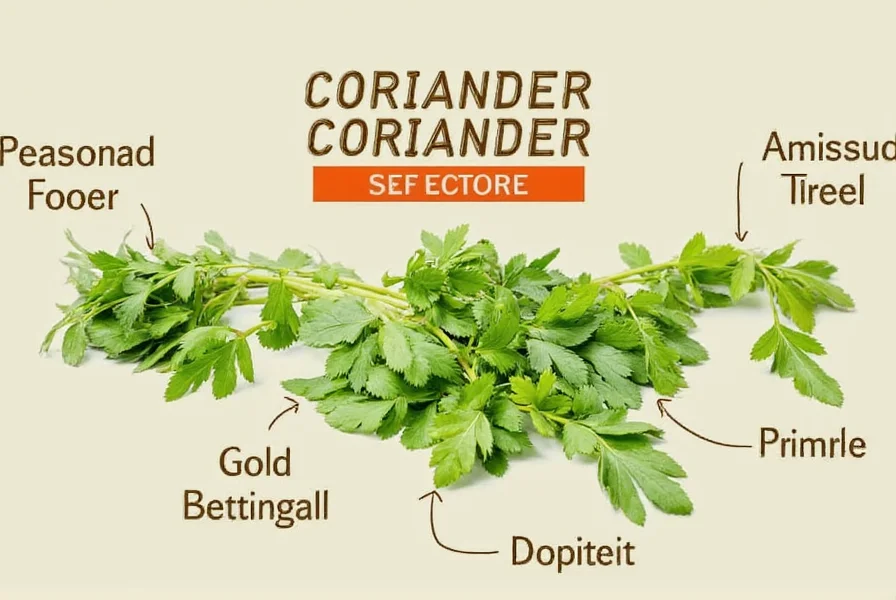The best immediate substitutes for fresh coriander (cilantro) are parsley for mild dishes, culantro for similar flavor profile, or a combination of basil and mint for Southeast Asian recipes. For dried coriander seeds, use cumin or caraway seeds at a 1:1 ratio, adjusting to taste. The ideal replacement depends on your specific recipe and desired flavor profile.
Running out of coriander mid-recipe can derail your cooking plans, but understanding the right substitute ensures your dish maintains its intended flavor profile. Coriander—known as cilantro when referring to the fresh leaves and coriander when referencing the seeds—offers a distinctive citrusy, slightly peppery taste that's challenging to replicate exactly. However, with the right alternatives, you can achieve comparable results without compromising your culinary creation.
Understanding Coriander's Unique Flavor Profile
Before selecting a substitute, it's crucial to understand what makes coriander special. Fresh coriander leaves contain aldehydes that create their signature bright, citrusy flavor with subtle peppery notes. This complex profile varies significantly between fresh leaves and dried seeds, which explains why different substitutes work better for different applications. The seed form offers warm, nutty, citrus-tinged notes that function more as a spice than a herb.
Top Fresh Coriander Leaf Substitutes
When your recipe calls for fresh coriander leaves (cilantro), consider these alternatives based on availability and dish requirements:
| Substitute | Best For | Flavor Difference | Substitution Ratio |
|---|---|---|---|
| Parsley (flat-leaf) | Mild dishes, garnishes | Milder, less citrusy | 1:1 |
| Culantro | Caribbean, Latin American dishes | Stronger, more pungent | 1:1 (use slightly less) |
| Basil + Mint combo | Thai, Vietnamese recipes | Sweeter profile | ½ basil + ½ mint to replace 1 part coriander |
| Arugula | Middle Eastern dishes | Peppery kick | ¾ arugula to replace 1 part coriander |
Dried Coriander Seed Alternatives
When substituting for ground or whole coriander seeds, the options differ significantly from fresh leaf replacements. Coriander seeds provide warm, citrusy notes that balance many spice blends:
- Cumin: Offers earthy warmth with less citrus. Ideal for Middle Eastern and Indian dishes. Use equal parts cumin to replace coriander seeds.
- Caraway seeds: Provides similar citrus notes with more intensity. Best for European and North African recipes. Use ¾ caraway to replace 1 part coriander.
- Fennel seeds: Delivers mild anise notes that work well in Mediterranean cuisine. Use equal parts fennel to replace coriander.
- Coriander seed substitute blend: Combine ½ cumin + ¼ caraway + ¼ fennel for complex replacement in curry recipes.

Cuisine-Specific Substitution Guide
The ideal coriander replacement varies dramatically by culinary tradition. Understanding these regional differences prevents flavor mismatches:
Indian and Pakistani Cuisine
For coriander substitute in curry recipes, try a combination of cumin and a pinch of lemon zest to mimic coriander's citrus notes. In fresh applications like chutneys, use mint and a small amount of parsley. Avoid strong substitutes like culantro which overpower delicate spice balances.
Mexican and Latin American Dishes
When making salsa or guacamole without coriander, use epazote for authentic flavor or a mix of oregano and lime juice for home cooking. For cilantro substitute in recipes requiring fresh herbs, culantro works well but requires chopping finely due to its tougher leaves.
Southeast Asian Cooking
For Thai and Vietnamese dishes, combine equal parts Thai basil and mint as the closest coriander leaf substitute in Indian cooking alternatives. Add a squeeze of lime at the end to replicate coriander's bright finish. Avoid parsley here as it lacks the necessary aromatic complexity.
Common Substitution Mistakes to Avoid
Many home cooks make critical errors when replacing coriander that compromise their dishes:
- Using dried herbs for fresh coriander: Dried cilantro loses its distinctive flavor and develops unpleasant notes. Never substitute dried cilantro for fresh.
- Overcompensating with stronger herbs: Using too much culantro or mint creates overpowering flavors that dominate the dish.
- Ignoring timing of addition: Delicate substitutes like basil should be added at the end of cooking, unlike coriander which can handle some heat.
- Misunderstanding regional differences: Using Mexican culantro in Indian recipes creates flavor clashes that disrupt traditional taste profiles.
Measurement Guidelines for Perfect Substitutions
Proper measurement ensures your coriander substitute measurements maintain recipe balance:
- Fresh herb substitutions: Use equal parts by volume, but chop substitutes finer than coriander
- Dried seed substitutions: Start with ¾ the amount of substitute, then adjust to taste
- For critical dishes: Prepare a small test batch with your substitute before committing the entire recipe
- When combining substitutes (like basil and mint): Use slightly less total volume than original coriander amount

Creating Your Own Coriander Substitute Blend
For frequent cooking needs, consider making a versatile coriander herb alternative blend:
Combine 2 parts cumin, 1 part caraway, and 1 part fennel seeds. Toast lightly in a dry pan, then grind. Store in an airtight container for up to 3 months. This blend works particularly well as a coriander substitute for curry bases and spice rubs. For fresh applications, keep a small container of pre-chopped parsley and mint in your refrigerator for quick access when coriander runs out.
When Substitutes Won't Work: Knowing Your Limits
Some dishes rely so heavily on coriander's unique chemistry that substitutes fall short. Traditional chimichurri, certain Indian chutneys, and authentic Thai curry pastes require fresh coriander for authentic flavor. In these cases, consider modifying your menu rather than compromising the dish. Understanding when not to substitute demonstrates true culinary expertise and respect for regional cooking traditions.











 浙公网安备
33010002000092号
浙公网安备
33010002000092号 浙B2-20120091-4
浙B2-20120091-4